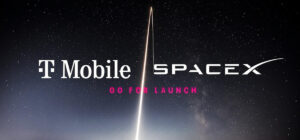
Elon Musk’s artificial intelligence company, xAI, has officially launched Grok-3, the latest iteration of its AI model, with bold claims that it outperforms leading models from Google, Anthropic, and Meta. According to the Artificial Analysis Quality Index, Grok-3 excels in mathematical reasoning, science, and coding, making it a formidable competitor in the AI landscape.
Grok-3: A Leap Forward
Musk described Grok-3 as “an order of magnitude more capable than Grok-2,” highlighting that the model underwent training with ten times more computing power than its predecessor. The AI model is being rolled out first to X’s Premium+ subscribers, with an additional subscription tier, “SuperGrok,” offering access to its most advanced features.
During a live demonstration on X, Musk emphasized that Grok-3 is still in beta but is improving rapidly, with new updates expected “literally every day.” A voice interaction feature is also set to launch in about a week, further enhancing user engagement.
How Does Grok-3 Compare?
Benchmark comparisons reveal that Grok-3 surpasses AI models such as DeepSeek-V3 and GPT-4o in various domains. It ranks high on the Artificial Analysis Quality Index, second only to OpenAI’s latest o3 model. Its “Reasoning Beta” model, however, stands out, outperforming nearly all competitors except OpenAI’s flagship offering.
Despite its strengths, Grok-3’s performance has sparked discussions about its objectivity and reliability. Early tests revealed inconsistencies in responses, leading to speculation about whether the model undergoes manual adjustments or algorithmic reweighting.
Introducing Deep Search: xAI’s Next-Gen Search Engine
Alongside Grok-3, xAI introduced Deep Search, a tool designed to revolutionize online research. Musk positioned Deep Search as an AI-driven search engine capable of scanning web pages and X posts to deliver refined results. He touted its ability to complete an hour’s worth of online research in just ten minutes, potentially rivaling AI-powered search tools from OpenAI and Perplexity.
Grok’s “Truth-Seeking” Ethos Sparks Debate
Musk has long championed Grok as a “maximally truth-seeking AI,” even if its conclusions challenge political correctness. However, some users have questioned whether Grok-3 aligns with Musk’s own viewpoints. A viral screenshot showed Grok-3 harshly criticizing legacy media, stating that outlets like The Information produce “polished narratives, not reality,” while praising X as the only true source of “real, trustworthy news.”
Further tests, however, contradicted this response, with Grok-3 providing more neutral descriptions of media outlets when prompted separately. This inconsistency has fueled debates about whether the model is biased or subjected to backend interventions.
Grok-3 Names Musk as a Dangerous Figure
One of the most unexpected revelations from Grok-3 came when it labeled Musk himself as one of the most dangerous people in America. While this might have been dismissed as an anomaly, subsequent queries showed shifting answers. Initially, Grok-3 listed Musk alongside Donald Trump, J.D. Vance, and others. Later, its responses changed to include global figures like Vladimir Putin and Xi Jinping, raising concerns about the AI’s consistency and whether external influences were shaping its output.
Musk has repeatedly claimed that Grok-3 operates with real-time access to data from X. However, discrepancies in its responses, particularly regarding Trump’s political status, have led some to question whether Grok-3 truly functions as advertised.
What’s Next for Grok?
Grok derives its name from Robert A. Heinlein’s novel Stranger in a Strange Land, meaning to deeply understand something. Since its initial launch in November 2023, the AI model has evolved significantly, with Grok-3 introducing enhanced reasoning capabilities and Deep Search functionality.
Despite its growing influence, Grok-3 has also faced scrutiny over its erratic responses and political undertones. While Musk promises continuous improvements, users remain watchful of how the model navigates objectivity, bias, and free expression.
Free Access—For Now
Initially available only to X’s premium subscribers, Grok’s accessibility expanded in late 2024, with some features becoming free for general users. With the launch of Grok-3, Musk has now declared that the model will remain free “until xAI’s servers melt.” While this gesture aims to broaden adoption, it also serves as a stress test to refine Grok-3 before potential monetization strategies take effect.
As the AI arms race intensifies, xAI’s Grok-3 marks a significant step forward. Whether it can truly challenge OpenAI, Google, and other AI giants remains to be seen, but one thing is certain: Musk’s latest innovation is making waves in the AI world.





3 thoughts on “Musk’s xAI Unveils Grok-3: A New Challenger in the AI Arena”